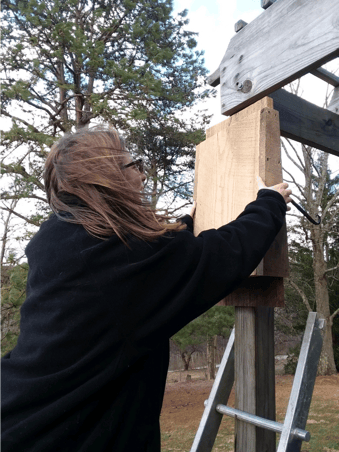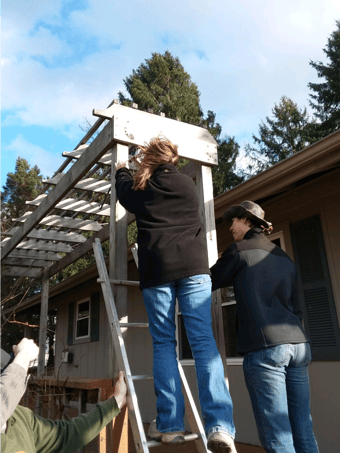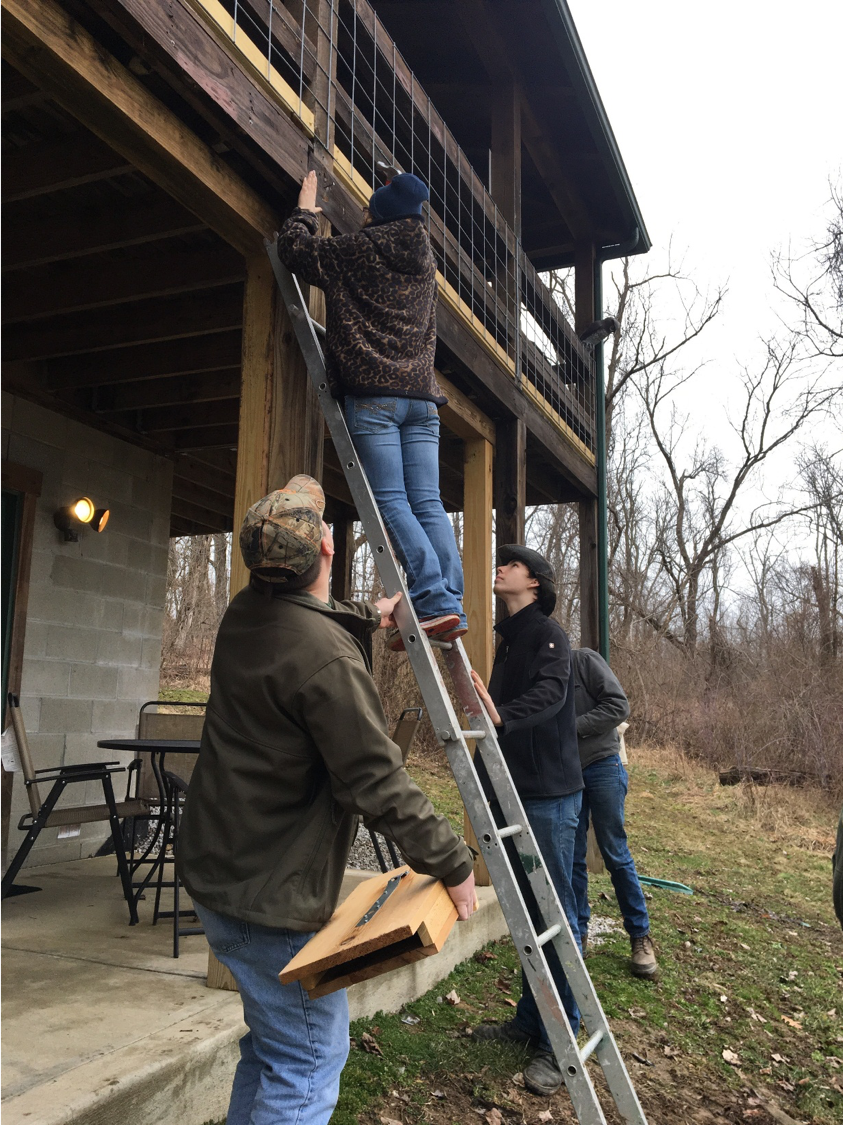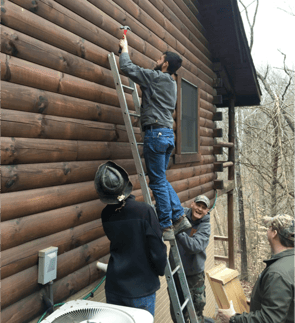 During the first weekend of March, members of the Hocking College Wildlife Club hung 23 bat boxes on cabins owned or managed by the Buffalo Lodging Company in Hocking County, at the owner’s request.
During the first weekend of March, members of the Hocking College Wildlife Club hung 23 bat boxes on cabins owned or managed by the Buffalo Lodging Company in Hocking County, at the owner’s request.
Business owners and homeowners alike can attract these beneficial mammals to their yard by planting native species to encourage insect prey and erecting a bat house.
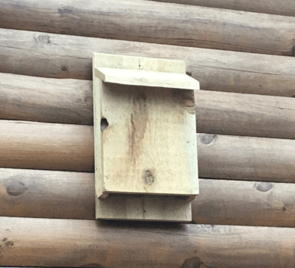 The typical bat house is about 18 inches wide, 24 inches long, and 6 inches deep. A bat house of this size will support 100 adult females and their pups. To maximize their effectiveness, a bat house must be exposed to at least 7 hours of sunlight per day.
The typical bat house is about 18 inches wide, 24 inches long, and 6 inches deep. A bat house of this size will support 100 adult females and their pups. To maximize their effectiveness, a bat house must be exposed to at least 7 hours of sunlight per day.
The bat boxes were constructed from rough-cut lumber donated to the Wildlife Club by retired Forest Management instructor Mark Puhl. A group of talented Wildlife Resources Management students built the boxes during January and February.
All bat boxes were mounted on the southern side of a cabin about 10 – 15 feet above the ground. The Wildlife Club earned $25 per bat box making the project ecologically and economically beneficial.
Fun Facts About Bats
- Bats are the only mammals capable of true flight.
- Bats are the major predators of night-flying insects, a group that includes many forest and agricultural pest species.
- All Ohio bats feed exclusively on insects and during the spring and summer months consume about half their body weight in insects every night. They feed in forests, agricultural areas, over water, and in urban and suburban areas.
- Female bats of several species form maternity colonies during the spring and summer in trees, caves and mines, and human-made structures.
- Ohio’s most common bat species, the big brown bat and little brown bat, readily form maternity colonies in human-made structures, including bat boxes.
- Most Ohio bats give birth to one offspring a year, called a pup.
- Pups stay in the maternity roost for about 3 – 4 weeks until weaning. Thereafter, they join their mother in evening insect feasts!
- Major threats to bat populations include white-nosed syndrome, wind turbines, and habitat destruction.



